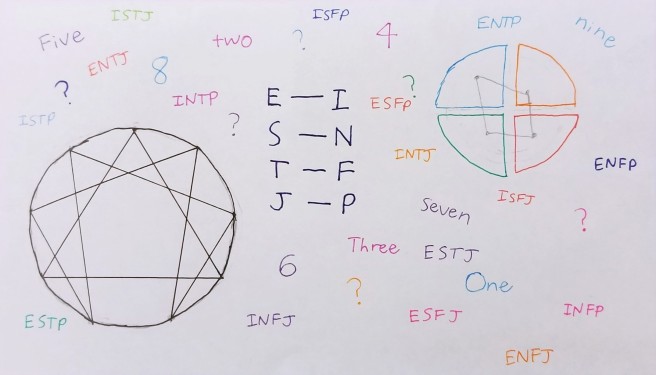
Love ’em or hate ’em, personality tests are here to stay.
The widespread obsession began with the Myers-Briggs Type Indicator–MTBI for short–with its four-letter codes that constantly demanded an explanation of the binary categories they represented. And then in the past few years, the ages-old Enneagram appeared on the popular scene, with its even-harder-to-explain nine personality types and seemingly endless complexities. Of course, there’s more: There’s the Big Five (OCEAN/CANOE), a set of factors that form a taxonomy of personality that is more commonly accepted within the psychology community than the Myers-Briggs, which is often dismissed as pseudoscience. There’s the HBDI, the Hermann Brain Dominance Instrument, a system that expands on the supposed left-brain, right-brain dichotomy and seems to be used mostly in corporate settings, which is where I learned of its existence. There’s the classic Rorschach inkblot test. You could even throw in Gary Chapman’s Five Love Languages into this category.
And they’re great tools for understanding ourselves and each other. They give us a way to put words to the unique way we experience the world, a set of slightly more concrete concepts to help describe something as abstract as personality. My personal favorite, of course, is the Enneagram. I think it does a much better job of explaining why we do what we do, the core desires and fears that drive us. Myers-Briggs, on the other hand, does an excellent job of describing our external behaviors and tendencies in the way we interact with the world and each other, and it is particularly helpful for learning how to work together in a corporate or leadership setting. But what fascinates me is that two people with the exact same Myers-Briggs type can have completely different Enneagram types, and vice versa. Different core motivations resulting in similar external behavior.
